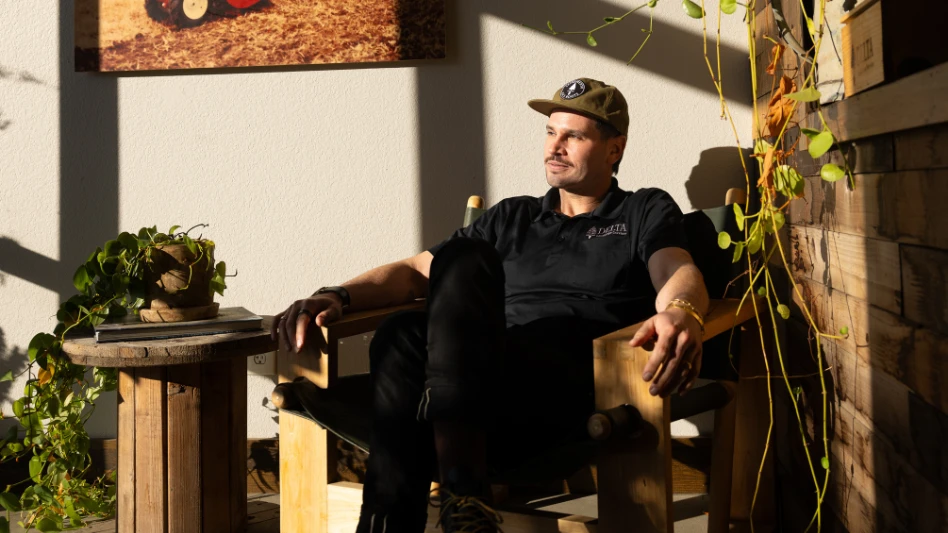[EDITOR’S NOTE: When a tree removes carbon dioxide from the air and converts it into oxygen, a contractor can breathe a sigh of relief knowing he or she has done some good for the environment in planting that tree. But trees and plants can do much more than remove contaminants from the air. They can also be used in a process known as phytoremediation, or the utilization of the natural properties of plants to remove hazardous wastes, such as lead, from soil. The following article by AP medical writer Lindsey Tanner details this experimental process being used in a Chicago neighborhood.]
CHICAGO – A smattering of small sunflowers adds a touch of gentle prettiness to the urban back yard where Hipolito Martinez's grandchildren play. But forget aesthetics. These flowers are locked in a mighty battle with the dirt they're planted in behind Martinez's tidy brick home. The invisible enemy is the toxic metal lead, saturating the soil in West Town, a low-income, largely Hispanic neighborhood a few miles west of downtown Chicago.
Sunflowers are among a number of plants called hyperaccumulators that research has shown can suck toxins from contaminated soil. Goldenrod, fescue and corn are some others, and they're all part of a federally funded study designed to find inexpensive ways to remove lead from residential soil.
With the highest number of lead-poisoned children in the nation, Chicago is the perfect battleground. More than 20,000 Chicago children aged 6 and younger are identified with excessive lead in their blood each year, at levels high enough to cause permanent intellectual impairment. Public health officials think far more are affected since fewer than half the children in that age group are screened.
Some 20 percent of youngsters 6 and under screened in the West Town neighborhood alone have elevated blood lead levels, putting them at risk for a range of learning and behavioral problems.
"This is an enormous health concern," said Dr. Helen Binns, a researcher at Children's Memorial Hospital who's co-leading the study.
Young children are particularly susceptible to soil exposure because they put their hands in their mouths so often. They may also be exposed by inhaling dirt particles or tracking dirt inside their homes, said co-researcher Kimberly Gray, a Northwestern University environmental engineer.
Dirt is considered child-safe when soil lead levels are less than 400 parts per million, but testing of soil in yards on Martinez's street found lead levels of more than 1,000 parts per million.
Researchers suspect paint dust contributed to the neighborhood's soil contamination, blown by wind or washed by rain into yards from homes where leaded paint was used. Past use of lead in gasoline and emissions from now shuttered factories are other likely culprits. Leaded paint was banned for residential use in 1978, but more than half the homes in Chicago were built before 1950.
PHYTOREMEDIATION. Phytoremediation, the use of lead-sucking plants, has been used for several years to help clean up contaminated industrial sites, though it is still considered somewhat experimental and results in many cases are not yet known, according to the U.S. Environmental Protection Agency.
Examples include sunflowers planted to remove radioactivity from ground water after Ukraine's Chernobyl nuclear power accident in 1986 and poplar trees used at a U.S. Army testing facility in Maryland to prevent the spread of residue from toxic solvents into a nearby marsh.
Officials say the Chicago program is among the first to attempt it in a residential area.
It's much cheaper than removing contaminated soil, though in the long run more labor intensive since plants need to be tended for several years.
It works in a number of ways. The simplest is using plants such as grass as a barrier to cover up contaminated soil.
But more intriguing is a process called phytoextraction – using plants that actually absorb lead from the soil into their roots. The plants can then be harvested and the site replanted until acceptable soil lead levels are reached.
In some plants, the absorbed lead may eventually travel from the roots into the above-ground foliage, which can be trimmed rather than removing the entire plant. The Chicago researchers say ideally that will happen with their perennials.
"If it's a perennial, then it's like a pump," Gray said. But, "If the lead is just in the roots, that's not such a bad thing, that doesn't doom us. It's still a feasible process."
Like many in West Town, Martinez's home is 100 years old, and when researchers first identified his neighborhood as contaminated a few years ago, he learned that the window sills and doors were covered with leaded paint.
They were replaced in an earlier lead abatement program, and this summer, the researchers' gardening crew planted perennial sunflowers and goldenrod in the back yard. The plants and soil will be tested at the end of the growing season to see how much lead was absorbed, and planting will resume next spring.
Martinez's home is one of 60 in the neighborhood involved in the two-year, $900,000 study. "I think it's great," he said. "It'd be good to get the lead out."
Latest from Lawn & Landscape
- North by Northwest's charitable act for the Ronald McDonald House Charities
- Coxreels expands V-100 Series product line
- Landscape Workshop expands with 2 acquisitions
- Wilson360 adds Daniel Grange as new consultant
- Batman and business
- CH Products releases new tree stabilizer
- Savannah Bananas founder Jesse Cole to speak at Equip Exposition
- Catch up on last year's Benchmarking report






